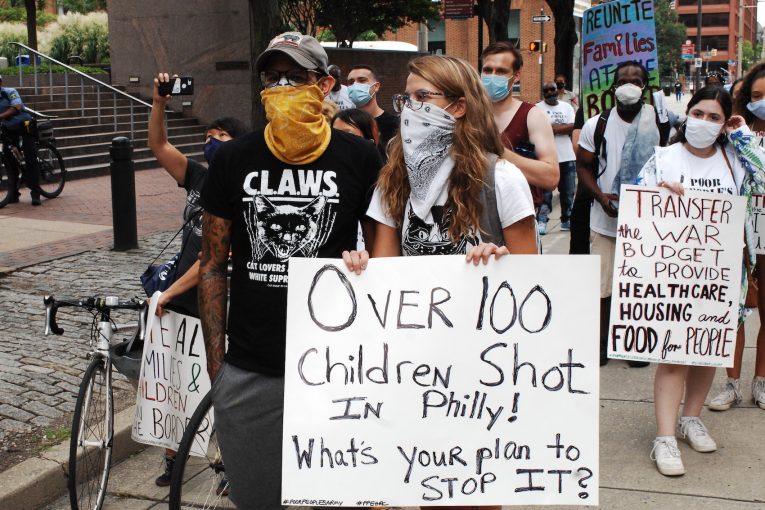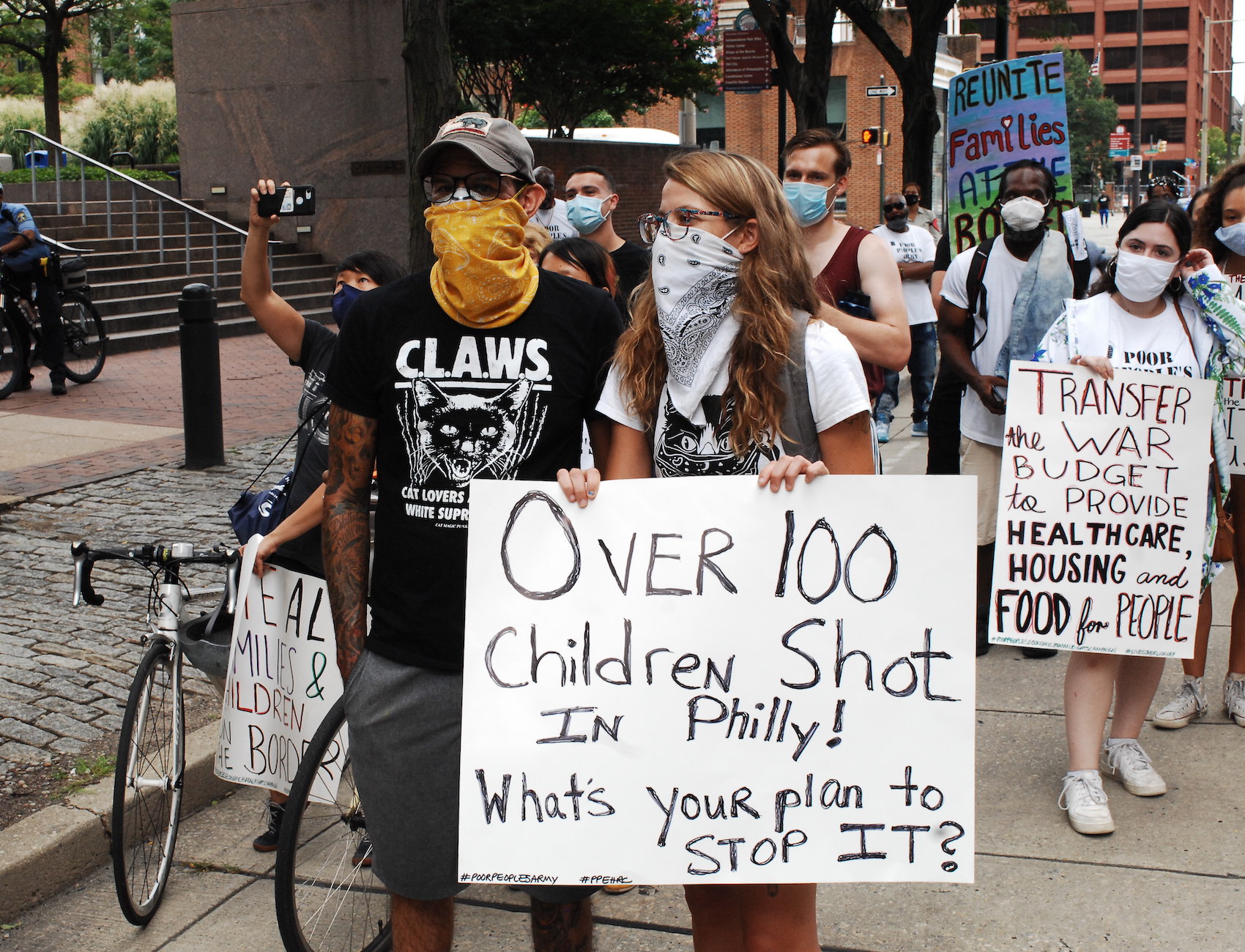

This budget season, Philadelphia must hold our law enforcement accountable for their failures by redirecting resources to strategies that can help us.
By Kendra Brooks
Philadelphia has a gun violence crisis that is rightfully generating a lot of concern. But some of the responses we traditionally resort to—increasing police budgets, calling for crackdowns in the neighborhoods that are most affected, and insisting on more punitive responses from the criminal legal system—are misguided and will only perpetuate further harm.
Gun violence is driven by generations of inequality, oppression, disinvestment, and neglect. It is the result of policies like the 10-year tax abatement and billions of dollars in property tax exemptions that starve our public schools of resources and leave our young people without the supports they desperately need. It is the result of a dire shortage of affordable housing paired with one of the lowest minimum wages in the country. And it is the result of a lack of action by the GOP-controlled state legislature to enact common-sense gun laws and fairly fund our city’s public goods. In order to make our communities safer, we must acknowledge our public safety failures and invest in strategies that address the  root causes of violence.
root causes of violence.
One great starting place for Philadelphia would be to cut our police department’s enormous budget in light of its abysmal rate of unsolved homicides so that we can invest that money in solutions that actually work.
As a recent article in The Appeal soberly illustrated, the rate at which Philadelphia police clear homicide cases—one of the best measures of a police department’s success in solving homicides—has dropped precipitously over the last few decades. (Although it’s widely used to tout success, declaring that a crime has been cleared does not mean that the crime has been solved; for instance, some departments clear crimes when a suspect has been identified.) Philadelphia has gone from a homicide clearance rate of nearly 80 percent in the 1980s to less than 50 percent in 2016. Last year, it dropped even further, from around 52 percent in 2019 to 42 percent in 2020. As The Appeal also reported, the stats are even worse for assaults committed with firearms—last year, that clearance rate was less than 20 percent, an at least 66 percent drop since 1969.
Yet for too long we have continued to invest more money into an approach that clearly isn’t working. Across the country, police departments are among the most well-funded city agencies, and Philadelphia’s is no exception. This year, the Philadelphia Police Department will receive $727 million, or 15 percent of our city’s operating budget—all while, during a post-pandemic budget shortfall, over 450 government employees are slated for layoffs, previous cuts in public pools and arts funding won’t be reversed, and public libraries are shuttered. And between 2015 and 2020, Philly’s police budget increased by $115 million, while during the same period, according to an investigation by the Philadelphia Inquirer, the city experienced nearly 8,500 shootings. Of those shootings, only 1 in 5 resulted in an arrest, and only 9 percent resulted in a conviction.
Those numbers show that despite being well-funded, police aren’t doing their job when it matters the most. The Philadelphia Police Department doesn’t use the funds we’ve given it to address our real public safety needs and focus on solutions for serious, violent crime. Instead, it spends the vast majority of its time on noncriminal calls, traffic infractions, and property or other nonviolent crimes, deploying law enforcement to nonwhite communities to over-patrol, surveil, and, quite frankly, harass people. According to reporting by WHYY, between October 2018 and September 2019, the department conducted a total of 309,533 motor vehicle stops, 90 percent of which were for minor traffic violations. The vast majority of these stops, nearly three-quarters, targeted Black drivers, but only 1 percent resulted in the confiscation of contraband such as illegal drugs or guns. Stop-and-frisks are also a pervasive problem in Philadelphia, even though 1 in every 3 is legally unfounded, according to a report by the ACLU. Black communities bear the brunt of this harrassment, with Black individuals being 50 percent more likely to be stopped without reasonable suspicion than white people.
The way Philadelphia allocates its public safety resources has utterly fractured trust in law enforcement, which is critical to solving violent crimes. A recent survey found that in neighborhoods where a shooting occurred within the last year, 62 percent of people found the police somewhat or very unhelpful. Eighty-three percent of people from those neighborhoods found police to be somewhat or very bad at preventing violence. An in-depth 2019 Washington Post investigation into unsolved murders reviewed a decade’s worth of data and found that “Black victims, who accounted for the majority of homicides, were the least likely of any racial group to have their killings result in an arrest.”
I live these realities regularly. Young people, around the same ages of my daughters are buried every single week. But Philadelphia police are not solving these crimes, and, in our community, police presence does not equate to feeling safe. We need to be surrounded by people who are clearly invested in the fate of our community, not just those who show up when we’re in crisis. We need Philadelphia to invest in far more violence prevention strategies and to build services and provide resources that create health, stability, and opportunities for growth. And we need Philadelphia’s law enforcement to take our tragedies seriously. To be clear, I’m not looking for the city to double down on aggressive policing or to dole out ever harsher criminal penalties. Rather, I want law enforcement to make good on its claims to prioritize violent crime by focusing its attention on gun violence and homicides instead of spending the majority of its time on issues that are better handled by others—medical professionals and counselors for mental health and substance use.
Scaling back the responsibilities and scope of law enforcement and investing instead in violence intervention programs and other alternatives to policing will do a lot more good for our communities and allow law enforcement to focus their efforts on solving the truly serious crimes. For example, by investing in Parks and Recreation and in our public schools—especially the 25 schools that half of all students impacted by gun violence attend—we can ensure our young people have access to the trauma-informed care and after-school programming needed to curtail and de-escalate conflicts. By prioritizing permanent, green, affordable housing in the city, we can stabilize families forced into precarity by the housing crisis. And by making significant investments in grassroots violence prevention work done by groups like YEAH Philly, the Youth Art & Self-Empowerment Project, Men of Courage, NOMO Foundation, CeasefirePA, and others, we can expand the scope of these programs and begin to treat gun violence like the public health crisis that it is.
This budget season, Philadelphia must begin to hold our law enforcement accountable for their failures by redirecting resources to other agencies and strategies that can help us. It is our responsibility as elected officials to listen to the vast majority of our constituents—nearly 96 percent of Philadlephians—who support diverting funds from police to community services, according to the 2020 Safety We Can Feel survey. It’s time we treat public safety as more than a political fundraising slogan and treat solutions to violent crime as more than a talking point. We need our public safety budgets to reflect real public safety solutions.
Kendra Brooks is an at-large councilmember in Philadelphia. She is the first Working Families Party member elected to the Philadelphia City Council. Originally published in the Appeal.
To sign up for our new newsletter – Everyday Injustice – https://tinyurl.com/yyultcf9
Support our work – to become a sustaining at $5 – $10- $25 per month hit the link: